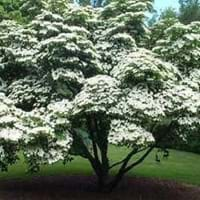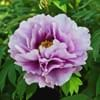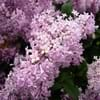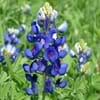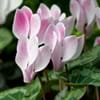Life Span
Perennial
Perennial
Type
Flowering Plants, Shrubs
Tree
Origin
Asia, North America, Southern Europe
North America, United States, Northeastern United States, Mid-Atlantic United States, Southeastern United States, North-Central United States, Canada
Types
Aristocrat, Buckeye Belle, Henry Bockstoce , Abalone Pearl, Coral Supreme, Cytherea, Charlie's White
Chinese kousa dogwood, Blue Shadow kousa, Weaver's Weeping dogwood
Habitat
Hillside, Woods
gardens, Near ponds, Wet Woods
USDA Hardiness Zone
3-9
4-8
Sunset Zone
A3, 1a, 1b, 2a, 2b, 3a, 3b, 4, 5, 6, 7, 8, 9, 10, 11, 12, 13, 14, 15, 16, 17, 18, 19, 20, 22
2a, 2b, 3a, 3b, 4, 5, 6
Habit
Clump-Forming
Spreading
Flower Color
Pink, Red, White
White, Ivory
Flower Color Modifier
Not Available
Bicolor
Fruit Color
Not Available
Purple, Black
Leaf Color in Spring
Dark Green
Green
Leaf Color in Summer
Dark Green, Green
Green
Leaf Color in Fall
Bronze, Dark Green, Green
Burgundy
Leaf Color in Winter
Not Available
Not Available
Plant Season
Spring
Spring, Summer, Fall, Winter
Sunlight
Full Sun, Part sun
Partial Sun, Partial shade
Type of Soil
Loamy
Clay, Loam
The pH of Soil
Neutral
Acidic
Soil Drainage
Well drained
Well drained
Bloom Time
Spring, Summer
Late Spring, Early Summer
Tolerances
Not Available
Cold climate, Soil Compaction
Where to Plant?
Ground, Pot
Ground
How to Plant?
Grafting, Seedlings, Stem Planting, Transplanting
Seedlings, Stem Cutting
Plant Maintenance
Medium
Medium
Watering Requirements
Does not require lot of watering, It cannot sustain wet-feet, Keep the ground moist but not water-logged, Needs watering once a week, Prefer drip-irrigation instead of Over-head watering, Water occasionally
Allow to dry out slightly between watering, occasional watering once established
In Summer
Lots of watering
Lots of watering
In Spring
Moderate
Moderate
In Winter
Average Water
Average Water
Soil pH
Neutral
Acidic, Neutral
Soil Type
Loamy
Loam, Moist, Well drained
Soil Drainage Capacity
Well drained
Well drained
Sun Exposure
Full Sun, Part sun
Full Sun, Partial Sun, Partial shade
Pruning
Do not prune during shooting season, Prune to control growth, Remove dead or diseased plant parts, Remove deadheads
Prune if you want to improve plant shape, Prune lower leaves, Prune once the plant is tall enough
Fertilizers
All-Purpose Liquid Fertilizer
Fertilize in early spring, Mulch
Pests and Diseases
Botrytis Blight, Leaf spot, Stem spot, Viruses
Crown rot, Leaf spot, Red blotch, Whiteflies
Plant Tolerance
Not Available
Humidity, Light Frost
Flower Petal Number
Semi-Double
Single
Showy Bark
No
Not Available
Foliage Texture
Coarse
Medium
Foliage Sheen
Glossy
Glossy
Attracts
Ants
Birds, Butterflies, Hummingbirds, Squirrels
Allergy
Not Available
allergic conjunctivitis, Headache, Pollen
Aesthetic Uses
Beautification, Bouquets, Showy Purposes, Used for decorating walls, fences, gates, hedges, etc.
Beautification, Cottage Garden, Showy Purposes
Beauty Benefits
Not Available
For treating wrinkles, Makes teeth white, Making cosmetics, Skin cleanser
Environmental Uses
Air purification
Forms dense stands, Nesting sites for birds, Shadow Tree, soil stabilisation
Medicinal Uses
Cough, Gout, Headache, Heartburn, Kidney problems, Upset stomach, Urinary tract problems
Acne, Antibiotic, Appetite enhancer, Cough, Diuretic, Emollient, Nutrients, Weight loss
Part of Plant Used
Flowers, Root, Seeds
Bark, Flowers, Fruits, Leaves
Other Uses
Showy Purposes, Used as Ornamental plant, Used for fragrance
Application in Handicrafts, Decoration Purposes, Grown for shade, Used as Ornamental plant
Used As Indoor Plant
No
No
Used As Outdoor Plant
Yes
Yes
Garden Design
Feature Plant, Foundation, Mixed Border
Feature Plant, Foundation, Mixed Border
Botanical Name
Paeonia suffruticosa
CORNUS alternifolia
Common Name
Peony
Alternate-leaved Dogwood, Pagoda Dogwood
In German
Pfingstrose
Wechselblättriger Hartriegel
In Spanish
Peonía
Cornus alternifolia
In Portuguese
Peônia
Cornus
In Latin
AGLAOPHOTIS
Cornus
Phylum
Magnoliophyta
Magnoliophyta
Class
Magnoliopsida
Magnoliopsida
Order
Not Available
Cornales
Family
Paeoniaceae
Cornaceae
Clade
Angiosperms, Core eudicots, Eudicots
Angiosperms, Asterids, Eudicots
Tribe
Not Available
Not Available
Subfamily
Not Available
Not Available
Number of Species
Not Available
Importance of Peony and Pagoda Dogwood
Want to have the most appropriate plant for your garden? You might want to know the importance of Peony and Pagoda Dogwood. Basically, these two plants vary in many aspects. Compare Peony and Pagoda Dogwood as they differ in many characteristics such as their life, care, benefits, facts, etc. Every gardener must at least have the slightest clue about the plants he wants to plant in his garden. Compare their benefits, which differ in many ways like facts and uses. The medicinal use of Peony is Cough, Gout, Headache, Heartburn, Kidney problems, Upset stomach and Urinary tract problems whereas of Pagoda Dogwood is Acne, Antibiotic, Appetite enhancer, Cough, Diuretic, Emollient, Nutrients and Weight loss. Peony has beauty benefits as follows: Not Available while Pagoda Dogwood has beauty benefits as follows: Not Available.
Compare Facts of Peony vs Pagoda Dogwood
How to choose the best garden plant for your garden depending upon its facts? Here garden plant comparison will help you to solve this query. Compare the facts of Peony vs Pagoda Dogwood and know which one to choose. As garden plants have benefits and other uses, allergy is also a major drawback of plants for some people. Allergic reactions of Peony are Not Available whereas of Pagoda Dogwood have allergic conjunctivitis, Headache and Pollen respectively. Having a fruit bearing plant in your garden can be a plus point of your garden. Peony has no showy fruits and Pagoda Dogwood has showy fruits. Also Peony is flowering and Pagoda Dogwood is not flowering . You can compare Peony and Pagoda Dogwood facts and facts of other plants too.

